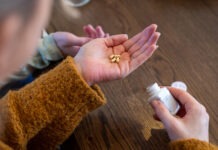The Therapeutic Goods Administration (TGA) has tightened dosing advice for the antipsychotic risperidone after an alarming number of overdoses occurred in patients under 18.
In 2024 alone, 22 adverse events as a result of overdose of risperidone oral solution were reported to the TGA – most cases involved accidental administration of 10 times the prescribed dose (for example, 5 mL instead of 0.5 mL).
Although no deaths were recorded, adverse effects led to hospitalisations in most cases.
Why are dosing errors occurring?
An investigation by the TGA unearthed several drivers for dosing errors of risperidone oral solution including:
- misinterpreting dosing instructions
- incorrect use of the dosing syringe
- medicine administration by non-primary caregivers (e.g. babysitters or other relatives).
And the TGA is not the only national health agency to raise concerns about risperidone dosing confusion.
The Spanish Agency for Medicines and Health Products issued a public alert after discovering that paediatric caregivers misread decimal points when administering a dose of 1 mg/mL risperidone solution, often inadvertently giving ten times the intended dose. Most (74%) of these incidents were serious, with children suffering sedation, hypotension, tachycardia, extrapyramidal symptoms, QT prolongation and, in some cases, seizures.
In Ireland, the Health Products Regulatory Authority echoed these concerns, reporting ten‐fold overdoses in children aged 3–15 – urging prescribers and pharmacists to provide clear dosing-device instructions and educate caregivers on recognising and responding to overdose symptoms.
What’s changing?
To address the identified risk, the Product Information (PI) and Consumer Medicines Information (CMI) for Risperdal have been revised, and generic manufacturers are now required to update PIs and CMIs to mirror these changes. The new versions for Risperdal include more detailed dosing guidance and illustrative diagrams to support accurate administration including:
- use the supplied pipette only: do not substitute with another measuring device
- open the child-resistant cap: push down on the plastic screw cap and turn counter-clockwise, then lift off
- insert and draw up dose: place the pipette in the bottle; hold the bottom ring and pull up the top ring to the mark matching the prescribed dose (e.g. 0.25 mL for 0.25 mg, 0.5 mL for 0.5 mg)
- dose equivalence: 1 mL of Risperdal solution = 1 mg risperidone; graduations on the plunger are in 0.25 mL (0.25 mg) increments
- administer in a drink: remove the pipette, slide the top ring down to expel the dose into a non-alcoholic beverage (e.g. water, juice, milk, coffee – avoid tea)
- after use: close the bottle; rinse the pipette with cold water, let it air dry in its case; avoid detergents or vigorous wiping to preserve the printed graduations.
While each generic product should cover the same key details, the syringe and instructions can vary by brand. So pharmacists are advised to always double-check the individual PIs.
What do pharmacists need to do?
Dosing instructions need to be clearly printed on the label. According to the Australian Commission on Safety and Quality in Health Care’s National standard for labelling dispensed medicines (Standard 6), label wording should:
- have digits for dosage amounts (e.g. ‘Take 1 tablet,’ not ‘Take one tablet’ or ‘Take ONE tablet’)
- express dose ranges with words between numbers (e.g. ‘1 to 2,’ not ‘1-2’ which could be read as ‘12’)
- spell out common fractions to avoid confusion (e.g. ‘quarter,’ not ‘0.25’ or ‘¼’)
- for small paediatric liquid doses, match the numbers on the oral dispenser (e.g. ‘0.5 mL’).
Presenting numbers as digits generally improves clarity among patients. However, fractions written symbolically (e.g. ½’) may be misread as ‘1 or 2’ and decimal points can be overlooked (e.g. ‘1.5’ read as ‘15’).
That’s why, when counselling patients prescribed risperidone oral solution, pharmacists should:
- verify that all caregivers understand the prescribed dosing regimen
- demonstrate precisely how to measure the required volume using the provided oral syringe
- instruct caregivers to review the dosing label before each administration and confirm their understanding, especially with those administering the medicine for the first time.



 AP
AP








